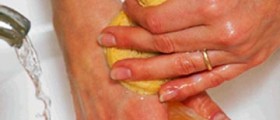The term personality disorder refers to a type of mental illness where the general thought processes as well as a way of perceiving situations and relationships are dysfunctional. There are many different personality disorders, but what is common between them is that they all mean that a person has a self-destructive or self-denigrating behavior or way of thinking.
These disorders bring about changes and disruptions of daily and work routines, as well as relationships, but are sometimes not noticed by the person suffering from them, as they may appear completely normal to that person.

Signs and Symptoms of Personality Disorders
The common signs and symptoms of personality disorders include frequent mood swings, difficulties in making friends, poor control of impulsive behavior, angry outbursts, stormy relationships, social isolation, a need for instant gratification, and alcohol or drug abuse.
There are three general groups of personality disorders called clusters. Cluster A is a group of disorders marked by odd eccentric behavior and thinking, distrust, and indifference to others. The disorders in this group are paranoid personality disorder, schizoid personality disorder, and schizotypal personality disorder.
Cluster B is made up of disorders characterized by antisocial and violent, dramatic and overly emotional behavior and thinking. These are antisocial personality disorder, borderline personality disorder, histrionic personality disorder, and narcissistic personality disorder.
In cluster C, we can find disorders marked by dependent, anxious, fearful thinking and behavior, and these are avoidant personality disorder, dependent personality disorder, and obsessive-compulsive personality disorder. This final disorder should not be confused with obsessive-compulsive disorder, which is a different type of anxiety disorder.
- Assessment of comorbid personality disorders (PDs) in patients with substance use disorders (SUDs) is challenging due to symptom overlap, additional mental and physical disorders, and limitations of the assessment methods. Our in-depth study applied methods to overcome these difficulties.
- A complete catchment area sample of 61 consecutively admitted patients with SUDs, with no previous history of specialized treatment (addiction clinics, psychiatry) were studied, addressing PDs and associated clinical and demographic variables.
- The thorough assessments included the Psychiatric Research Interview for Substance and Mental Disorders and the Structured Clinical Interview for DSM-IV Axis II Personality Disorders.
- Forty-six percent of the SUD patients had at least one PD (16% antisocial [males only]; 13% borderline; and 8% paranoid, avoidant, and obsessive-compulsive, respectively).
- Cluster C disorders were as prevalent as Cluster B disorders. SUD patients with PDs were younger at the onset of their first SUD and at admission; used more illicit drugs; had more anxiety disorders, particularly social phobia; had more severe depressive symptoms; were more distressed; and less often attended work or school.
Treatment Options
If you or anyone you know manifest more of these symptoms over a while, it would be advisable to see a doctor or a mental health professional for diagnosis and treatment, as these disorders can seriously cause problems in normal life and work. It is crucial to have an open and frank talk with the person who is suffering from any of the disorders to provide encouragement and support for the person in need of help so that he or she can manage to cope with and understand the condition.
You can also help with finding qualified and professional help and organizing appointments if the person is unable to do it on their own. In the case that the person is seriously considering harming him or herself in any way, you should take the person to a hospital or call for emergency help.
- medlineplus.gov/personalitydisorders.html
- www.nhs.uk/conditions/personality-disorder/
- Photo courtesy of Helga Weber by Flickr: www.flickr.com/photos/helga/

















Your thoughts on this
Loading...